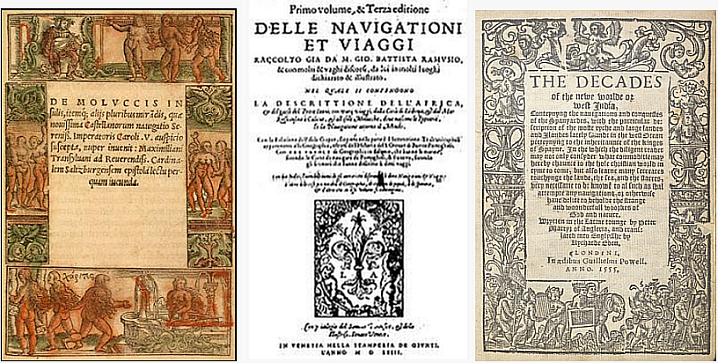Last week, in this chronological review on why Mazaua got displaced by Limasawa as the site of the first Holy Mass in our archipelago, I repeated my initial impression that 1555 was a watershed year in how the narrative about Magellan’s voyage was to evolve in the succeeding 466 years.
The year 1555 was when Richard Eden published in London his English translation from Latin of Italian historian Peter Martyr’s
Decades of the New World. From that year onwards, the anthology of notable voyages in the Age of Exploration would carry what was presumed to be a faithful chronicle of the Magellanic Expedition, making it an authoritative text of that voyage until the end of the 18th century.

But even from just a cursory reading of Eden’s narrative, it becomes clear that it was seriously at variance with Antonio Pigafetta’s chronicles and other well-documented accounts of the Magellanic voyage. Most glaring was Eden’s departure from Pigafetta’s firsthand account that Magellan’s fleet, after its trans-Pacific voyage, subsequently anchored in an island called Mazaua and held the first Holy Mass there.
Eden’s account identified that anchorage and first Mass site as Buthuan instead:
“The 25th day of March, they departed from [Suluan] and directed their course between the West and southwest, and sailed between four Islands named Cenalo, Huinanghan, Hibusson, and Abarien… The 28th day of March, they came to the island of Buthuan where they were honorably entertained by the King and the Prince his son… The last day of March near unto Easter, the captain caused his priests to say mass... Departing from that place with certain pilots of the said kings conducting them, they came to the islands of Zeilon, Zubuth, Messana, and Calaghan,..”
Eden garbled the narrative of Magellan’s sojourn in several other ways, raising questions on what primary text Eden had based his English retelling of the Magellanic sojourn in the archipelago.
The problem with Eden’s translation was that he had evidently based it on an anonymously written narrative in French of Magellan’s sojourn. That French narrative—it first came out in 1536—told of Magellan and his crew celebrating Easter Sunday mass in Buthuan on March 31, 1521, then right thereafter sailing for Cebu with a stopover at an island called “Messana.”
There had been speculation, though not confirmed, that this anonymous French translation was Jacques Antoine Fabre’s. He had been commissioned as translator by the Queen Regent of France, Margaret of Savoy, after Pigafetta furnished her a copy of his Italian manuscript. However, on October 3, 1522 or not more than 45 days after Fabre was engaged as translator, the Venetian geographer-travel writer Giovanni Batistta Ramusio publicly went on record with this snide remark against Fabre’s French translation: “(T)his worthy person…made only a summary of it, leaving out what seemed fit to him; and this was printed, very incorrectly, in France, and has now come into our hands.”
This animosity of Ramusio towards Fabre was in sharp contrast to his glowing introduction to
“De Moluccis Insulis,” the sensational chronicle about Magellan’s voyage written in Latin by Maximilianus Transylvanus, courtier to the Roman Emperor Charles V. Finished in just 45 days after the return to Spain in 1522 of the lone surviving Magellanic ship Victoria, Transylvanus’ first-person narrative would earn him recognition as the author of the earliest account published about Magellan’s and Elcano’s first circumnavigation of the world.
So why did Pigafetta keep silent despite this evident usurpation of what he considered above all, after his long perilous journey around the globe, as “neither gold nor silver, but things much more precious in the eyes of so great a Sovereign… a book written by my hand of all the things that had occurred day by day in our voyage”?
(Next:
Getting our history right after 500 years - 6) April 29, 2021
This essay, 2,042nd of the series, appeared in the column “English Plain and Simple” by Jose A. Carillo in the Campus Press section of the April 22, 2021 Internet edition of The Manila Times
,© 2021 by the Manila Times Publishing Corp. All rights reserved. Read this article online in
The Manila Times:
“Getting our history right after 500 years - 5”To listen to the audio version of this article, click the encircled double triangle logo in its online posting in
The Manila Times.
ALL PARTS OF THIS HISTORY SERIES:1.
Getting our Philippine history right after 500 years - Part 12.
Getting our Philippine history right after 500 years - Part 23.
Getting our Philippine history right after 500 years - Part 3 4.
Getting our Philippine history right after 500 years - Part 45.
Getting our Philippine history right after 500 years - Part 5 THIS POST
6.
Getting our Philippine history right after 500 years - Part 6
PART 7 TO FOLLOW MAY 6, 2021